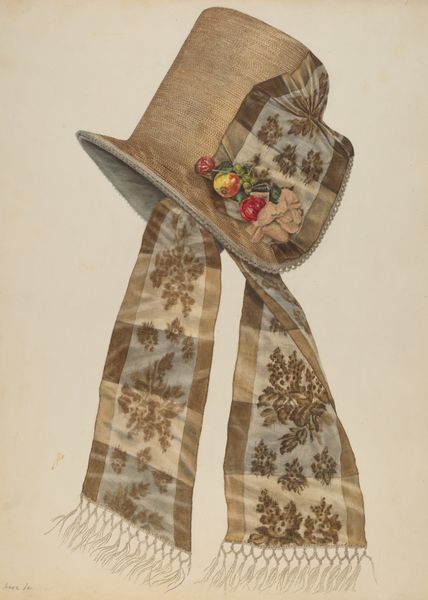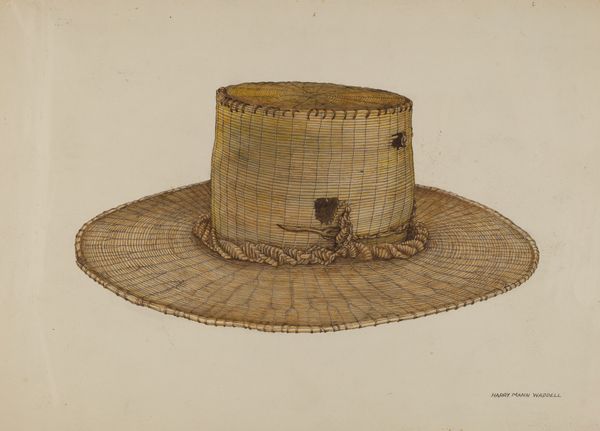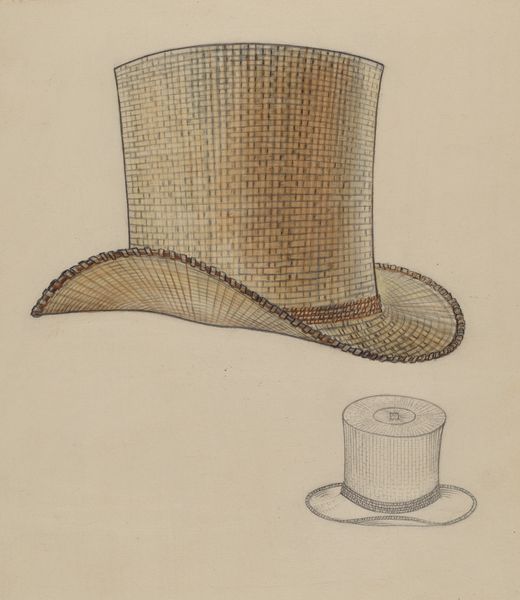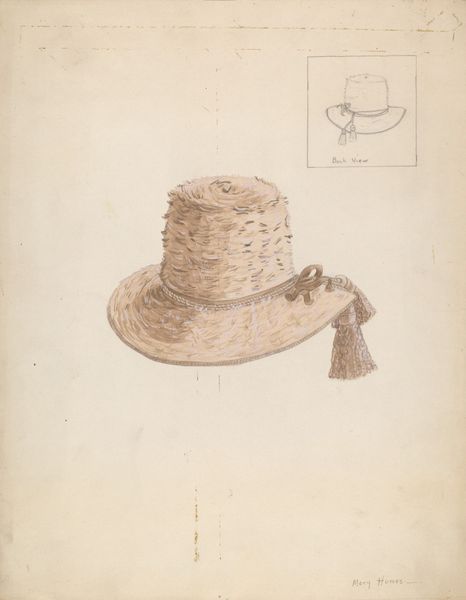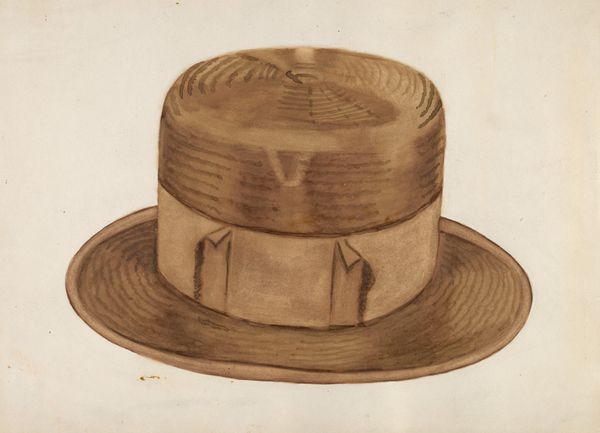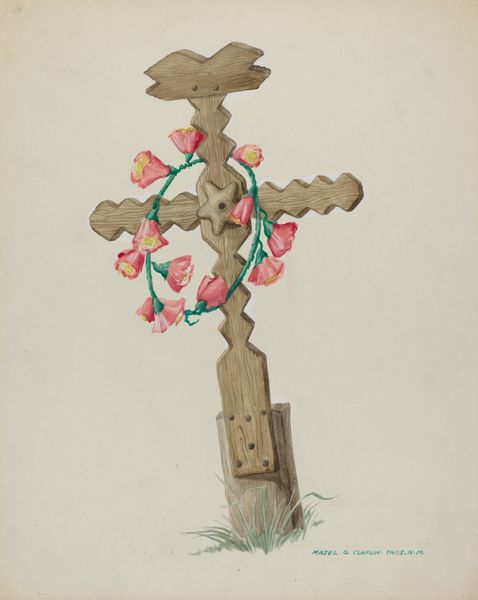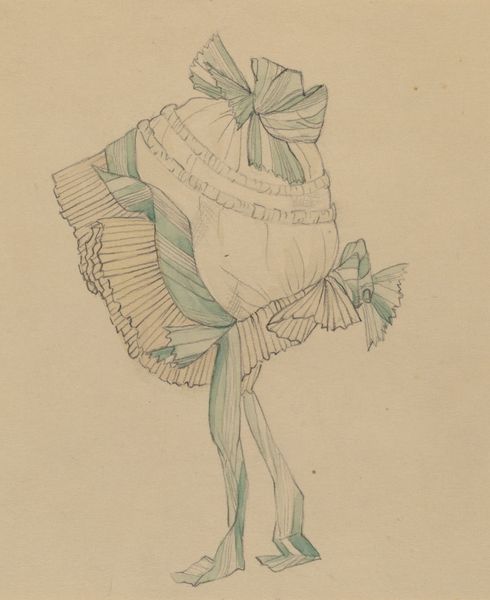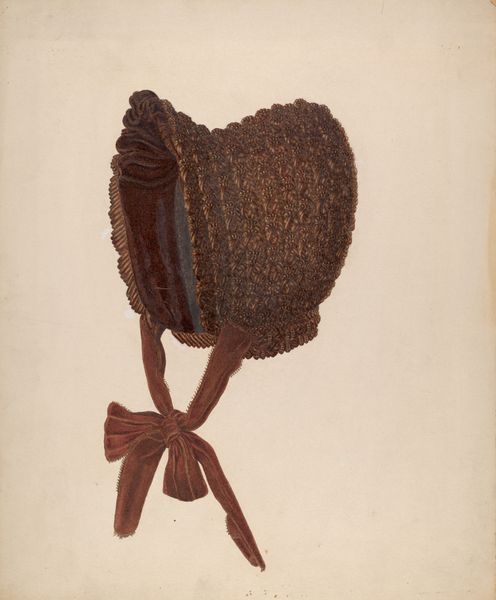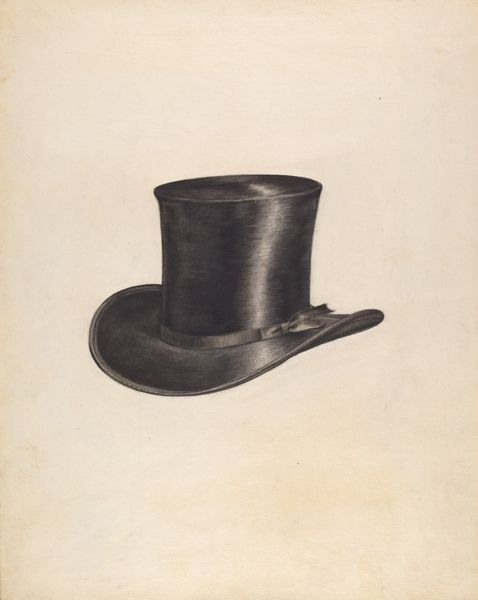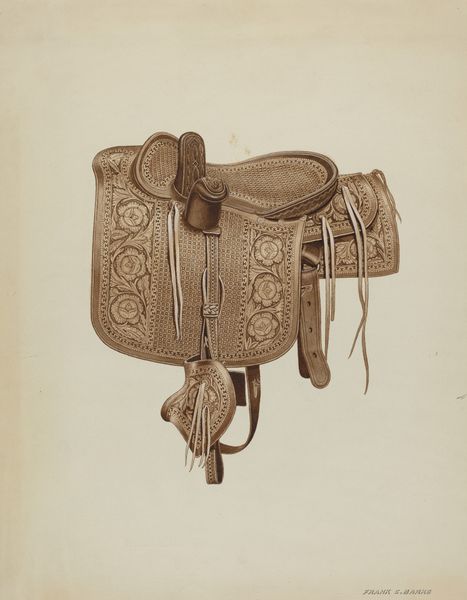
drawing, paper, pencil
#
portrait
#
drawing
#
paper
#
pencil drawing
#
pencil
#
watercolour illustration
Dimensions: overall: 29 x 23 cm (11 7/16 x 9 1/16 in.)
Copyright: National Gallery of Art: CC0 1.0
Curator: Let's discuss this piece called "Hat," a work on paper by Nancy Crimi from around 1936, executed in pencil. What are your initial thoughts? Editor: It’s undeniably elegant, isn't it? But almost haunting, with the way it seems to float against that off-white background. It speaks of lost fashion, the idealized image of women... Curator: Fashion, of course, doesn't exist in a vacuum. A drawing like this exists as part of a broader conversation around the role of women, their visual representation, and the social pressures placed upon them during the interwar years. Editor: I'm immediately drawn to the hat as symbol. Consider its shape, almost a halo—yet grounded, weighted down by the ribbons. Does that balance—even tension—speak to aspirations of beauty tethered by something more mundane? Or perhaps constrained femininity? Curator: That reading certainly resonates. Women during this period were often caught between traditional domestic roles and burgeoning desires for independence, a visual dialectic mirroring the high-necked collars and shorter hemlines in vogue at the time. Even its apparent ephemerality suggests the constraints of fleeting trends... Editor: And consider that particular shade of brown—is that a muted representation of natural textures? I wonder if Crimi was playing with earth tones and their association with conventional female traits? The texture itself hints at meticulous craftsmanship... Curator: Precisely. This intersects with the history of garment labor, particularly female garment labor. And the presence or absence of the wearer becomes central; are we reflecting on idealized representations of women, the objectification that fashion contributes to and normalizes? Editor: Or, dare I say, could it be a quiet act of empowerment? The artist capturing and therefore, in some way, possessing this potent symbol of femininity and transforming it through the act of art? Curator: That’s a valuable counterpoint. The piece creates this space, allowing us to recognize a complex dynamic rather than presenting it from only a binary position. Editor: The hat persists in memory through this depiction, gaining new context each time a new person reflects on it. I find that truly amazing. Curator: Ultimately, it underscores that even an everyday object like a hat becomes layered with meaning when filtered through art and the lens of cultural context.
Comments
No comments
Be the first to comment and join the conversation on the ultimate creative platform.
